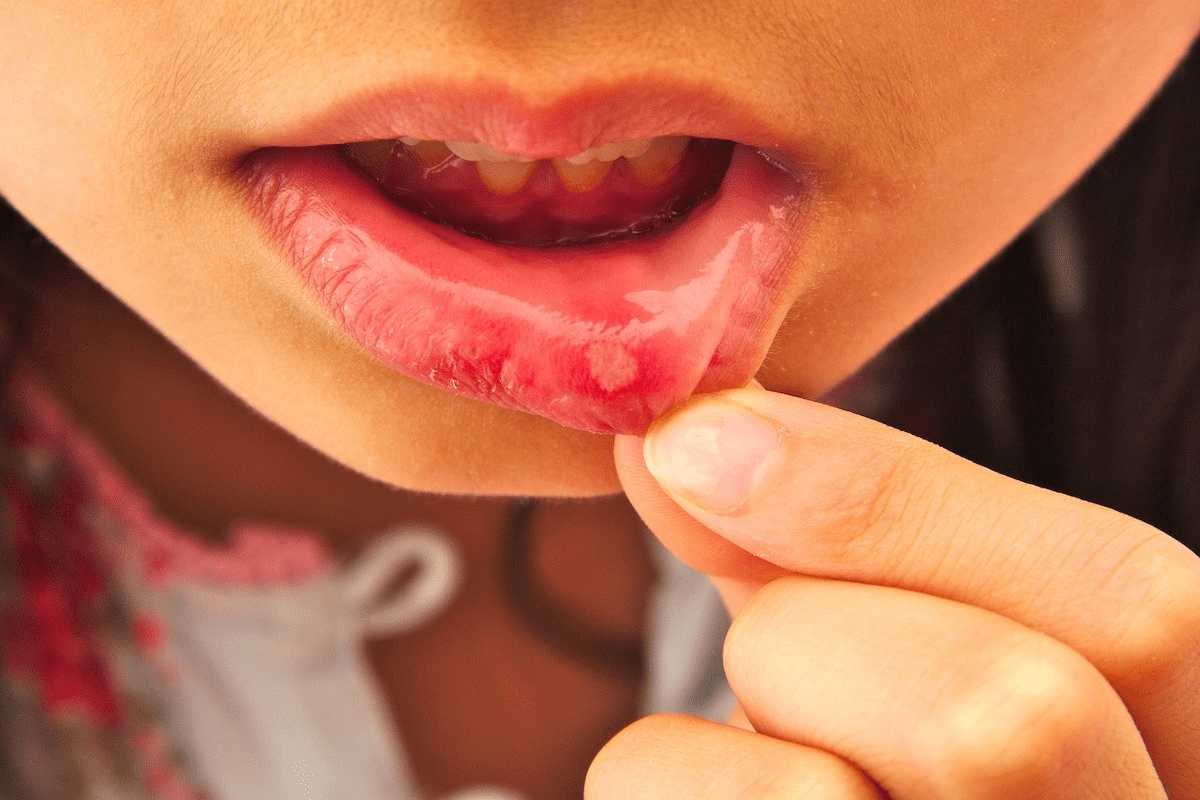Last Updated on October 31, 2025 by Saadet Demir

Viral pharyngitis treatment involves supportive care like rest, fluids, and pain relief, as antibiotics are ineffective.
Viral pharyngitis is a common condition that affects millions worldwide. It causes discomfort and pain in the throat. Understanding the difference between viral and bacterial pharyngitis is key for effective management.
About 80 percent of pharyngitis cases are caused by viruses. Usually, a sore throat from a virus gets better on its own in 5 to 7 days. It doesn’t need antibiotic treatment.
At Liv Hospital, we stress the importance of accurate diagnosis and proper management for viral pharyngitis. We make sure patients get the best care possible.

Viral pharyngitis is when viruses cause inflammation in the pharynx. This leads to a sore throat and trouble swallowing. It affects the tissues in the throat, causing redness and swelling.
Viral pharyngitis is an inflammation of the pharynx caused by viruses. It’s common and can make people very uncomfortable. Doctors need to know about it to treat it right.
Many different viruses can cause viral pharyngitis. It’s behind 20 percent of all throat infections and 30 to 50 percent of colds. Symptoms include a sore throat, trouble swallowing, and sometimes a fever.
Viral pharyngitis usually lasts 7 to 10 days without treatment. How long it lasts depends on the virus and the person’s health. Symptoms get worse at first and then get better as the body fights off the virus.

It’s important to know the viral cause of pharyngitis to manage symptoms and avoid complications. Many viruses can cause this condition. Knowing which viruses are involved helps in choosing the right treatment.
Rhinovirus is the top cause of viral pharyngitis, making up about 20 percent of cases. It has over 100 different types, making it a big factor in pharyngitis. The high variability of rhinovirus means people can get it many times. This is because immunity to one type doesn’t protect against others.
Adenovirus is another common cause of viral pharyngitis, often linked to outbreaks of febrile respiratory illness. Other respiratory viruses, like influenza virus and parainfluenza virus, can also cause pharyngitis. They usually do so as part of a broader respiratory infection.
The Epstein-Barr virus (EBV) is a major cause of pharyngitis, often linked to infectious mononucleosis (“mono” or the “kissing disease”). EBV infection can lead to severe pharyngitis, along with fever, swollen lymph nodes, and tiredness. Diagnosis of EBV-related pharyngitis involves clinical evaluation and lab tests to find EBV-specific antibodies.
Herpes simplex virus (HSV) can cause pharyngitis, often with ulcerative lesions on the oropharynx. Other viruses, such as cytomegalovirus (CMV) and human immunodeficiency virus (HIV), can also cause pharyngitis, mainly in those with weakened immune systems. The symptoms and severity can vary a lot based on the virus.
Knowing the viral causes of pharyngitis is key to managing it properly. The specific virus involved affects treatment choices and outcomes.
Viral pharyngitis starts with viruses entering the oropharynx’s lining tissues. This is the first step in the disease’s development.
The disease begins when viruses attack the ciliated epithelium of the nasopharynx. The oropharynx is very prone to viral infections because of its many epithelial cells. This invasion causes the cells to malfunction, starting an inflammatory response.
The body’s immune cells get activated, and cytokines are released in viral pharyngitis. This fight against the virus causes symptoms for the patient. Cytokines make blood vessels more open and bring more immune cells to the infection site.
The inflammation leads to swelling and increased blood flow in the tissues. Edema makes the throat swell, causing pain and trouble swallowing. Hyperemia makes the area red and warm, typical of viral pharyngitis.
The throat’s lymphoid tissues, like the tonsils, grow and become sore when infected. This is the body’s way of fighting off the virus. The swollen lymphoid tissues add to the sore throat and discomfort of viral pharyngitis.
Telling viral from bacterial pharyngitis is key to treating it right and cutting down on antibiotics. Getting it right means patients get the care they need.
There are signs that help tell viral from bacterial pharyngitis apart. Viral pharyngitis often comes with cough, hoarseness, and runny nose. On the other hand, bacterial pharyngitis, often caused by Streptococcus pyogenes, has a more severe sore throat, fever, and swollen lymph nodes.
The look of the throat can also give clues. Viral pharyngitis might have a red throat with or without discharge. Bacterial pharyngitis, though, can have more redness and discharge on the tonsils.
If someone has a sudden sore throat, fever, and swollen lymph nodes, think of streptococcal pharyngitis. Even if the throat looks normal, it could be strep.
“The diagnosis of streptococcal pharyngitis is key. It tells us if we should start antibiotics. This can stop serious problems like rheumatic fever.”
To find out if it’s strep, we use rapid tests and throat cultures. Rapid tests are quick but not always as accurate as cultures.
Diagnostic Test | Sensitivity | Specificity |
Rapid Antigen Detection Test (RADT) | 70-90% | 90-100% |
Throat Culture | 90-95% | 95-100% |
Knowing what causes pharyngitis is vital for treatment. Not using antibiotics when not needed helps fight antibiotic resistance.
By knowing if it’s viral or bacterial, doctors can treat better. This improves health and saves money.
Managing viral pharyngitis requires a mix of pain relief and soothing the throat. Most cases are caused by viruses. Knowing the right treatment is key to feeling better.
Reducing pain and swelling is vital in treating viral pharyngitis. Over-the-counter pain relievers like acetaminophen or ibuprofen help. They ease throat pain and lower fever.
Medication | Dosage | Purpose |
Acetaminophen | 500mg every 4-6 hours | Pain relief and fever reduction |
Ibuprofen | 400mg every 4-6 hours | Pain relief and anti-inflammatory |
Analgesics are key in easing viral pharyngitis discomfort. Always follow the dosage to avoid side effects.
Throat-soothing meds offer extra relief. Throat lozenges and sprays with menthol or eucalyptus soothe the throat.
Antibiotics don’t work on viruses, including viral pharyngitis. Unnecessary antibiotic use can cause resistance and harm. So, antibiotics are not advised unless a bacterial infection is confirmed.
By focusing on symptom relief and avoiding antibiotics, we can treat viral pharyngitis well. This supports the body’s natural healing.
When you have viral pharyngitis, taking care of yourself at home is key. It helps ease symptoms and speeds up recovery. We know that treating this condition well means focusing on feeling better and managing symptoms.
Keeping well-hydrated is a big part of home care for viral pharyngitis. Drinking lots of fluids keeps your throat moist and comfy. This helps avoid dehydration.
Staying hydrated is vital when you have viral pharyngitis. Drink water, herbal teas, and clear broths to soothe your throat and stay hydrated. It’s best to drink these at room temperature or a bit warm. Very hot or cold drinks can make your throat worse.
Try to avoid caffeinated and sugary drinks. They can make dehydration worse. Instead, choose electrolyte-rich beverages or warm, non-caffeinated drinks for comfort and hydration.
Gargling with salt water can help reduce throat inflammation and kill bacteria. To make a salt water gargle, mix 1/4 teaspoon of salt in 8 ounces of warm water. Stir well, then gargle several times a day.
This can help reduce throat swelling and loosen mucus. It’s a simple and affordable way to manage viral pharyngitis symptoms.
Honey is great for soothing a sore throat. Mixing honey with warm water or herbal tea makes a comforting drink. It helps ease throat discomfort.
Warm drinks like tea or broth can also help. They soothe the throat and make you feel more comfortable. Just make sure they’re not too hot, as this can irritate your throat.
Using a humidifier can make your environment more comfortable by adding moisture to the air. Dry air can make throat irritation worse. So, keeping the air moist is helpful.
There are many humidifiers out there, like cool mist and warm mist models. The right one for you depends on what you prefer and your needs. Always clean your humidifier to stop bacteria and mold from growing.
Knowing how long it takes to get better from viral pharyngitis is important. Most people feel better in 5 to 7 days. We’ll help you understand what to expect during this time.
In the first days, symptoms are usually the worst. You might have a very sore throat, fever, and feel very tired. It’s important to drink lots of water and rest a lot. Staying hydrated helps your body fight the infection better.
By days 4-7, symptoms should start to get better. The fever should go down, and the sore throat will start to feel better. Keep resting and drinking water is key during this time.
By the end of the first week, most symptoms should be much better. If your symptoms don’t get better or get worse, see a doctor. They can check for any other problems or infections.
When you feel better, you can start doing things you normally do. But, it’s best to avoid hard activities for a few more days. It’s important to listen to your body and not rush back too quickly.
Knowing when to see a doctor is key to managing viral pharyngitis well. Most cases can be handled at home. But, some situations need a doctor’s help to avoid serious problems or to treat severe symptoms.
Some symptoms mean you should see a doctor right away. These include:
If you or your child has any of these signs, call a healthcare provider fast. For severe breathing trouble, go to the emergency room.
Children, under 5, need extra watchfulness because of risks like febrile seizures or dehydration. If your child:
you should talk to a healthcare provider.
Some people face a higher risk of serious problems from viral pharyngitis. This includes those with:
Condition | Risk Factor |
Chronic heart or lung disease | Increased risk of respiratory complications |
Immunocompromised state | Higher susceptibility to severe infections |
Diabetes | Potential for worsened glucose control |
These folks should watch out and see their doctor if they notice any concerning symptoms.
If symptoms last longer than expected or get worse, see a doctor. This is very important if you notice:
Talking to a healthcare provider in these cases can help find any secondary infections or complications. This ensures you get the right treatment for ulcerative pharyngitis or oropharynx infection quickly.
It’s important to know the causes, symptoms, and treatments for viral pharyngitis. We talked about the different viruses that cause it, like rhinovirus and adenovirus. We also explained how they are different from bacterial infections.
Getting a proper diagnosis is key to finding the right treatment. For viral pharyngitis, treatments aim to ease pain and inflammation. This includes using pain relievers and throat soothers. Drinking plenty of water and using humidifiers can also help.
It’s vital to tell the difference between viral and bacterial pharyngitis. Antibiotics are not for viruses. Doctors use various methods to figure out the cause. This helps them recommend the right treatment.
We stress the need for a complete plan to manage viral pharyngitis. This includes medical treatments and home care. By following this approach, patients can get better and avoid serious problems. Knowing the cause and type of pharyngitis is essential for effective treatment.
Viral pharyngitis is when the pharynx gets inflamed due to a virus. It causes a sore throat, discomfort, and pain.
Viral pharyngitis is caused by viruses, while bacterial pharyngitis is caused by bacteria like Streptococcus. The treatments are very different.
Common viruses include rhinovirus, adenovirus, Epstein-Barr virus, and herpes simplex virus. Knowing the cause helps in managing it better.
Viral pharyngitis usually lasts 7-10 days. Proper treatment and care can help ease symptoms and speed up recovery.
Antibiotics don’t work on viruses and can cause side effects. They are only for bacterial infections.
Drinking plenty of water, gargling with salt water, and using honey and warm drinks can help. Humidifiers also help.
See a doctor if you have warning signs, symptoms get worse, or if you’re at high risk.
Yes, but children need special care. Always check with a doctor if unsure about symptoms or treatment.
Look out for severe swallowing trouble, high fever, and dehydration signs. Seek medical help if you see these.
Use pain relievers and throat-soothing meds. Home care like humidifiers and warm drinks also helps.
Symptoms get worse in the first few days and then get better in 7-10 days with the right care.
Yes, it can lead to ear infections or sinusitis. Proper treatment and follow-up care can prevent these.
National Center for Biotechnology Information. (2025). How to Treat Viral Pharyngitis Key Steps Viral. Retrieved from https://www.ncbi.nlm.nih.gov/books/NBK519550/
Subscribe to our e-newsletter to stay informed about the latest innovations in the world of health and exclusive offers!
WhatsApp us